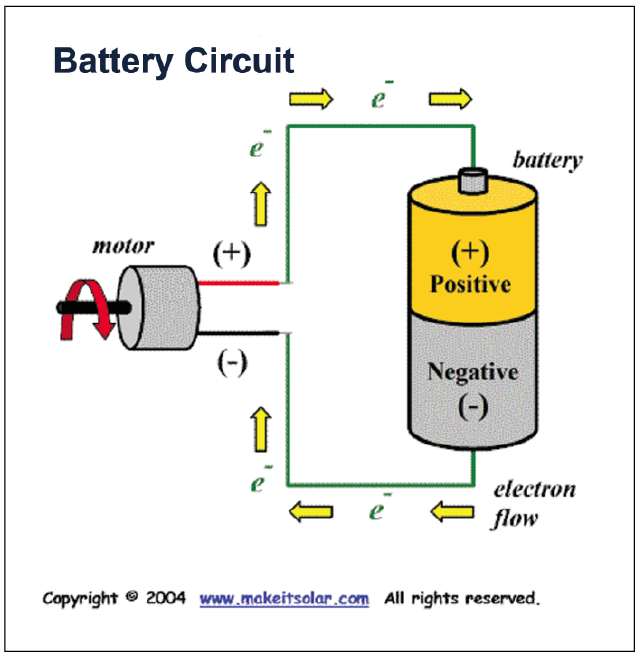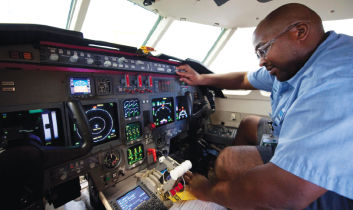Back to (electrical) basics
Having just spent a considerable amount of time working on the development of a curriculum package for aircraft maintenance engineer students, I’ve had cause to ponder what in fact we do teach to would-be aircraft mechanics. I’m sure that most “M” licence holders would be shocked to see the scope of content which is mandated by Transport Canada. A quick look at the CAR’s AWM 566 Appendix “C” Part 2 (https://www.tc.gc.ca/eng/civilaviation/regserv/cars/part5-standards-a566sc2-1891.htm)will reveal that students entering an aircraft maintenance program must be taught a mind-boggling amount of information in order to meet the licensing requirements. As a teacher, I have observed that often it is the electricity portion of the AME training which causes the most difficulty for students entering the AME “M” program.
In an attempt to simplify, and even de-mystify some of this material, I would like to examine, and explain certain elements the Transport Canada Standard.
Let’s start with:
22.1 Basic Electricity DC
Explain:
1. Electron theory and electrostatics.
2. Magnetism and electromagnetism.
3. Electromagnetic induction.
4. Units of electrical measurement:
• voltage
• current
• resistance
One of the key aspects of understanding and meeting the requirements set forth by Transport Canada, is understanding “taxonimy”. Bloom’s Taxonimy is used extensively in education, and essentially provides the verb, which dictates the depth to which a subject is taught. In our first example from AWM 566 the key word is “explain”.
Other verbs from the taxonimy which are extensively used by Transport Canada are “identify”, “describe”, and “perform”. Most practical exercises and projects carried out by students are identified in the Standard as “Perform” items, such as “Perform: Inspection and servicing of motors.” These performance items are simple enough to interpret and complete. It becomes a little more difficult to interpret and distinguish the theoretical verbs, such as identify vs. describe, or describe vs. explain.
A little trick I employ is to think of a person. It could be anyone, but let’s pick Toronto mayor Rob Ford, and apply the verb from the taxonimy to that person.
IDENTIFY Rob Ford: He is the mayor of Toronto.
DESCRIBE Rob Ford: He is a red-faced, stocky, sweaty man who is prone to poor judgement and self-destructive behaviour.
EXPLAIN Rob Ford: Good luck with this one, but you get the point. Each of these verbs required a different level, or depth of understanding.
So then, back to our first example from the Transport Canada Standard. Although the study of quantum physics has demonstrated that the traditonal notion of “electron theory” is in fact not accurate, it’s still a pretty good way of getting one’s head around the nature of electricity and how it works. The explanation of electron theory and electrostatics that I give, would go something like this:
All matter is composed of atoms. Atoms have a core, or “nucleus” which contains protons and neutrons and orbiting the nucleus are electrons. The thing we really care about when studying electron theory is the nature of the electrical charges that these sub-atomic particles carry. Protons are said to have a “positive” charge, electrons have a “negative” charge, and neutrons have a “neutral” charge, so let’s just forget about the neutrons, and concentrate on the positive protons, and the negative electrons. If you create a surplus of electrons somewhere, you would have a strong negative charge; if you create a surplus of protons (or think of it as a lack of electrons) you’d have a positive charge.
 It turns out that in electron theory, as in so many other aspects of life, “opposites attract”. Therefore, if you connect your negative charge to your positive charge, maybe using a piece of wire (called a “conductor”) the electrons will move toward the protons, along that piece of wire/conductor. This movement of electrons through the conductor toward the protons (to which they are attracted) is called “electron flow” or simply “current”. The understanding of electricity is all centred around the flow of electrons through conductors, caused by the negatively charged electrons being attracted to, and flowing toward the positively charged protons. Simple!
It turns out that in electron theory, as in so many other aspects of life, “opposites attract”. Therefore, if you connect your negative charge to your positive charge, maybe using a piece of wire (called a “conductor”) the electrons will move toward the protons, along that piece of wire/conductor. This movement of electrons through the conductor toward the protons (to which they are attracted) is called “electron flow” or simply “current”. The understanding of electricity is all centred around the flow of electrons through conductors, caused by the negatively charged electrons being attracted to, and flowing toward the positively charged protons. Simple!
Whether you are dealing with a battery, generator, alternator, solar panel etc, it’s all about the same thing — the electrons moving through the wires from the negative terminal to the positive terminal, thus creating a current flow. When the situation exists whereby there is a positive terminal and a negative terminal, the difference between the two points is called a “potential difference”. The greater the amount of potential difference the greater the amount of current flow will be when you connect the two points using a conductor.
 Another term for “potential difference” is “voltage”. Therefore, the more voltage we have, the more current we cause to flow. Incidently, the unit of measure for current flow is “amperes” or more commonly, just “amps”. Increasing the voltage applied to a circuit then, will cause an increase in current flow, or amperage.
Another term for “potential difference” is “voltage”. Therefore, the more voltage we have, the more current we cause to flow. Incidently, the unit of measure for current flow is “amperes” or more commonly, just “amps”. Increasing the voltage applied to a circuit then, will cause an increase in current flow, or amperage.
Not all materials are good conductors of electricity. If we pass current through a material that offers some opposition to the current flow, we are dealing with a resistance to current flow, and resistance can be measured in units called “ohms”. Let’s plug some numbers into this theory and see what happens.
If we have a potential difference of 10 volts, and we measure a current flow of one amp, what would you expect to happen if we doubled the voltage to 20 volts? If you said, “The current will double to become two amps” you’d be 100 per cent correct! What if we increased the voltage to 40 volts? Right! The current would increase to four amps. So, an increase in voltage applied to a circuit will cause an increase in current. Again, simple!
 If the amount of resistance in the above circuit was one ohm, thus giving us our original scenario of 10 volts applied to one ohm of resistance gives us 10 amps of current flow, and we were to DOUBLE the amount of resistance to two ohms, what would happen to the amount of current flow?Did you guess it would be cut in half? Awesome! You win a coconut. As we increase the resistance in a circuit, the current decreases. This means that there are two ways to decrease the amount of current flowing in a circuit:
If the amount of resistance in the above circuit was one ohm, thus giving us our original scenario of 10 volts applied to one ohm of resistance gives us 10 amps of current flow, and we were to DOUBLE the amount of resistance to two ohms, what would happen to the amount of current flow?Did you guess it would be cut in half? Awesome! You win a coconut. As we increase the resistance in a circuit, the current decreases. This means that there are two ways to decrease the amount of current flowing in a circuit:
• Increase the resistance
• Decrease the voltage
Congratulations, if you can explain this to someone else, you’ve just completed the following Transport Canada requirements for an AME licence.
Explain:
Electron theory and electrostatics.
Units of electrical measurement:
voltage
• current
• resistance
You may vaguely remember being taught this when you were in college, only it was called “Ohm’s Law” and represented by the equation:
E = Voltage (in volts)
I = Current (in amps)
R = Resistance (in ohms)
So, Voltage = Current X Resistance
Current = Voltage ÷ Resistance
Resistance = Voltage ÷ Current
The study of electricity can be a bit daunting because of our inability to actually see or touch any of its elements, but by keeping your thinking on a clear and simple level, you will find it is actually quite logical and easy to understand, as long as you don’t allow yourself to be intimidated by it. Now go out there and fix those pesky wiring snags!
Q: If a voltage of 24 volts is applied to an eight ohm resistance, how much current will flow in the circuit?
Answer to previous question:
Q: If an aircraft is directly west of a VOR station and the pilot selects a course of 90 degrees, the deviation bar in the CDI will move to the centred, “on-course” position. What will the “TO/FROM” indication be?
A: The indication will be “TO” because if the aircraft is west of the station, flying the selected course of 90 degrees will take you TO the VOR station.
About The Author
GORDON WALKER entered the avionics industry after graduation from Centennial College in 1980. His career with Nordair, Air Canada, CP Air, PWA, and ultimately Canadian Airlines took him to many remote corners of Canada. Since leaving the flight line to pursue a career as a college professor, Walker has continued to involve himself in the aviation/avionics industry, by serving on several CARAC Committees concerning the training and licensing of AMEs, being nominated to the CAMC Board of Directors, and being elected President of the National Training Association. (NTA).
View all articles by Gordon Walker.















































